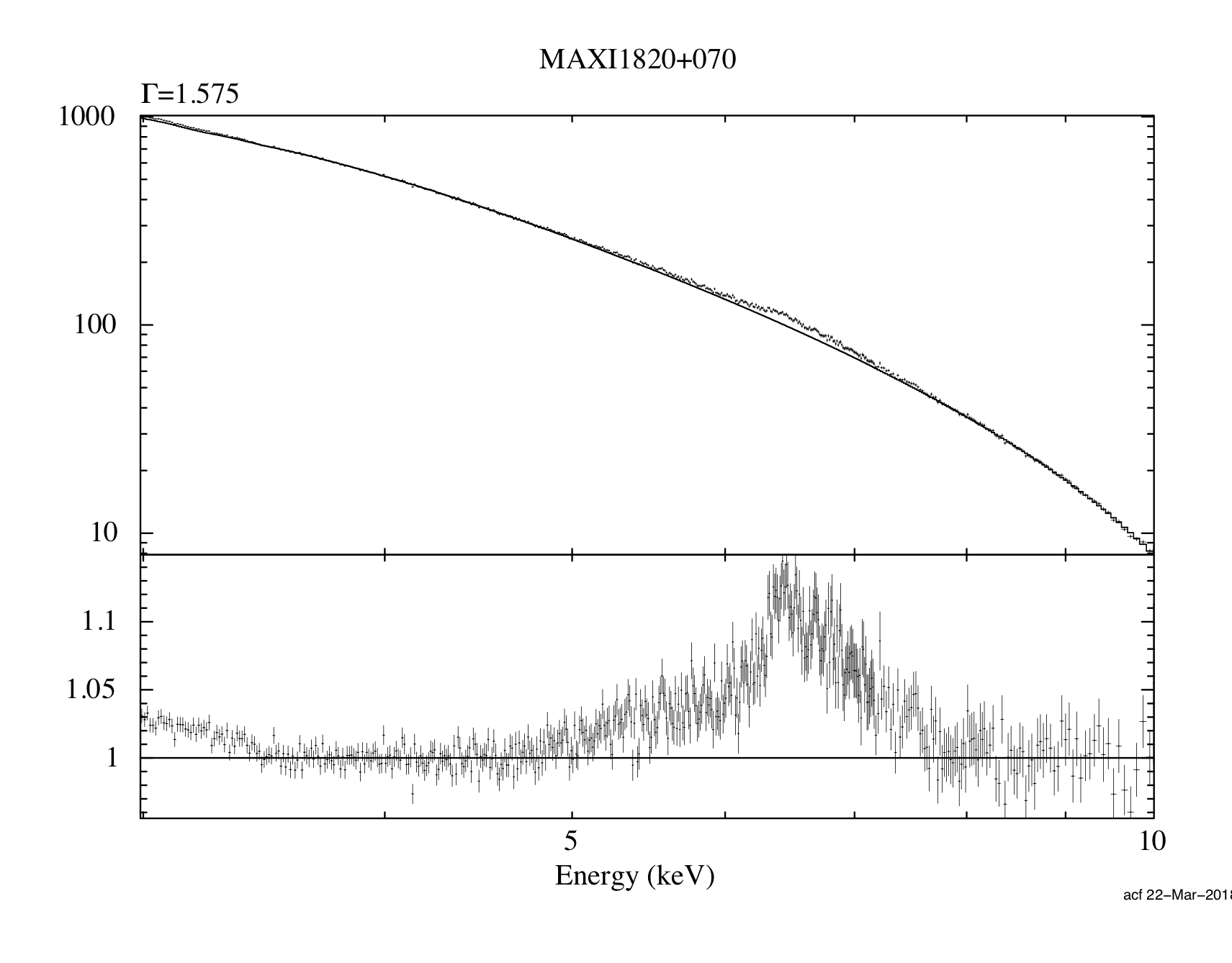NICER / ISS Science Nugget for March 22, 2018Quasi-periodic oscillation detected in new transient MAXI 1820+070NICER responded to a Target of Opportunity (TOO) triggered by the ISS MAXI payload on March 12, 2018, and pointed to the new X-ray transient called MAXI J1820+070. From the first observation to the most recent (March 22), the measured flux has climbed from ~900 counts per second (cps) to more than 20,000 cps, making it the 2nd-brightest X-ray source in the sky. Observations today indicate that this source is also exhibiting extremely bright flashes of < 50,000 cps in less than 0.1 seconds. NICER is the only X-ray instrument capable of studying without distortion the combined spectrum and variability of sources with such high brightness. Spectral and timing analysis indicate that this source is a new black-hole binary transient. NICER has marginally detected a 66 Hz Quasi-Periodic Oscillation (QPO) in the early data. Although only a tentative detection, the QPO frequency is intriguing, since QPOs have been observed at a similar frequency in two black hole X-ray binaries (GRS 1915+105 and IGR J17091-3624). NICER has also detected a relativistically broadened iron K emission line (see figure). NICER is coordinating observations with a wide range of telescopes around the world and in orbit to help build a more complete physical picture of this intriguing source. NICER
|



